Table of contents
Alfalfa sprouts are germinated seeds of the alfalfa ( Medicago sativa ), also known as seed alfalfa, which taste delicious raw as a salad ingredient. Their mild, sweet taste allows for a wide range of uses. Use organic seeds for sprouting.
Use in the kitchen
The seeds of alfalfa are long, bean-shaped and have a shiny brownish colour. Sprouted alfalfa seeds, with their delicate stems and green cotyledons, look similar to garden cress . Unlike the slightly hot, peppery and spicy garden cress, alfalfa sprouts have a mild taste that is reminiscent of peas . Similar to mung bean sprouts, they taste slightly nutty and sweet and have a crunchy texture when raw. Along with sprouts of fenugreek seeds, radishes, broccoli and sprouted lentils, they are one of the most popular sprouted varieties that are used in many different ways in the kitchen.
Alfalfa sprouts can be enjoyed raw or cooked. However, because the sprouts are very fine, they collapse when cooked or blanched and are therefore not particularly suitable for this type of preparation. It is therefore advisable to exploit the extensive raw potential of sprouted alfalfa seeds.
Caution is advised when eating unsprouted seeds raw, as they contain canavanine (an amino acid that is harmful to health). However, this ingredient breaks down during the germination process, meaning that germinated alfalfa sprouts can be eaten raw without any concerns. 1,2,3 More on this in the chapter "Danger - Intolerances - Side Effects". You should also make sure that the sprouts are in a hygienic condition and rinse them thoroughly with water before eating.
Due to their mild aroma, germinated alfalfa seeds go well with many dishes, especially in salads, smoothies, summer rolls, wraps, bowls, sandwiches, dips and sauces. They give every dish a beautiful eye-catcher and a crunchy bite. They are suitable as a sprout topping on bread with hummus, over starters, with soups (eg curry butternut squash soup with sprouts or radish leaf spinach soup with pumpkin seed topping ) and stews such as vegetable curry or risotto . Alfalfa sprouts can also be enjoyed on their own as a snack.
Their crunchy texture enriches fresh salads in particular. Alfalfa sprouts can be combined with various leafy vegetables such as spinach, rocket, iceberg lettuce, radicchio, lamb's lettuce and Chinese cabbage . Other vegetables, including tomatoes, cucumbers, peppers, corn and carrots, also go well with the sprouts. Sprouted alfalfa seeds can also be used to make a pure sprout salad, which can be seasoned with a simple dressing made from lemon juice or balsamic vinegar, mustard, salt andpepper and fresh herbs such as parsley, basil or chives . For a sweet, fruity note, the sprout salad can also be refined with fruit such as apples, pears, apricots or grapes . The mixture of sweet and savory flavors of fruit, vegetables and sprouts creates an exciting taste experience.
In parts of Russia and China, tender alfalfa leaves are used as a vegetable. 4 The colorful flowers (blue or purple) make a beautiful, edible 5 decoration, e.g. for salads, sandwiches or vegetable dishes. The flowers and leaves can also be found in tea blends.
Making your own alfalfa sprouts
How do you grow your own alfalfa sprouts? Alfalfa sprouts are easy to make at home. When buying seeds, make sure they are organic and only buy intact, whole alfalfa seeds. Peeled or broken seeds will no longer germinate! Sprouting seeds are available online and in selected stores. More on this in the "Purchasing - Storage" chapter.
There are various germination devices and methods, such as germination jars, germination boxes and towers, germination bags or sieves. A germination jar that keeps the moisture even is best for growing alfalfa sprouts. Optimal moisture distribution prevents the thin sprouts from losing their firmness due to drying out.
First, soak the seeds for at least 6 hours, preferably overnight. Then place them in a germination device or a germination jar. Use a sufficiently large jar, as germination growth is accompanied by a strong increase in volume. Alfalfa seeds increase in volume by eight to twelve times during germination. 12 g (1 tablespoon) of alfalfa seeds produce 70 g of sprouts, which corresponds to a volume of approximately 500 ml. Therefore, you should not put more than 2 tablespoons of seeds in the germination device or jar.
At the beginning, fine fibrous roots grow, which should not be confused with mold. If you are unsure, a smell test can help: the white, furry fibrous roots look like mold, but they smell fresh. Mold, on the other hand, has a musty smell. The sprouts should be rinsed with water at least once a day, preferably 2-3 times. To do this, fill the glass with water, then empty it again and let it drain well. 6 Since alfalfa sprouts contain canavanine, they should only be harvested after a germination period of 7-8 days. 3 More on this in the chapter "Danger - Intolerances - Side Effects".
For sprouts with a green tip, you can place the jar on a windowsill from the third day onwards. 6 The color changes from a light yellow to green due to the formation of chlorophyll. 7 Yellow and green alfalfa sprouts show differences in their phytochemical composition. More on this in the chapter "Secondary plant substances". In addition, dark-germinated yellow alfalfa seeds have a higher germination rate and are longer than the green sprouts germinated under light. Darkness can therefore promote the growth of the sprouts in terms of length, but is not a prerequisite. 7
For multi-layered sprouts and for producing larger quantities, you can also use a strainer. You can read more about this in the ingredient mung bean sprouts . The strainer causes the sprouts to align downwards. If you prefer the typical "alfalfa tangle" visually, you should use a sprouting jar. 6
The following article will give you a closer look at the topic of phytic acid or phytate and soaking or sprouting .
Vegan recipe for alfalfa smoothie
Ingredients: 1 handful of endive leaves, 1 handful of alfalfa sprouts, 1 mango (pitted, organic), 1 kiwi (peeled, organic), some rice milk, water or ice cubes (to taste).
Preparation: Put all ingredients in a smoothie blender or puree finely with a hand blender and vary the liquid (rice milk, water or ice cubes) according to taste. Serve in a glass and enjoy.
Vegan recipes with sprouted alfalfa seeds can be found under the note: " Recipes that have the most of this ingredient ".
| Not only vegans or vegetarians should read this: Vegans often eat unhealthily. Avoidable nutritional errors . |
Shopping - Storage
Alfalfa sprouts can be found all year round in the vegetable department of well-stocked supermarkets such as Coop, Migros, Spar, Rewe, Billa or Edeka , some of them are even organic. Aldi, Lidl, Denner, Hofer, Volg, etc. also carry them in their range from time to time. In any case, you can find germinated alfalfa seeds in natural food stores, health food stores and larger organic supermarkets such as Alnatura or Denn's Biomarkt .
When buying alfalfa sprouts, it is important to pay attention to their freshness. Choose sprouts that have a crisp and rich, light green color. Wilting and discoloration indicate older goods.
Raw alfalfa seeds for making your own at home can be found mainly in health food stores, organic shops, online and in the garden department of shops. Look for organic quality and the note that the seeds are suitable for growing sprouts. Without this note, they may be seeds for fodder plants that have been chemically treated beforehand.
There is also alfalfa powder made from the cotyledons of the young alfalfa plant. However, we recommend growing the sprouts yourself or buying them fresh. It is unclear whether alfalfa powder is raw food quality, as high temperatures are often used during the drying and powdering process.
The availability of germinated alfalfa seeds varies depending on the size of the store, catchment area, etc. Our recorded food prices for the DA-CH countries can be found above under the ingredient image - and by clicking you can see their development at various suppliers.
Storage tips
If you cannot eat sprouts you have bought or grown yourself straight away, we recommend storing them in a tightly sealed jar in the fridge at 5 °C. Ideally, you should rinse them briefly with water once a day and then store them in the fridge again. You can also store them in the same way as you would for the germination process: To do this, place the sprouting jar upside down in a bowl.
Breaking the cold chain can be a potential risk, so always take a look at purchased products. It is advisable to open the plastic bag or foil immediately after purchase. Then rinse the alfalfa sprouts thoroughly and store them back in the refrigerator until use.
Ingredients - Nutritional values - Calories
The germinated alfalfa seeds have a water content of around 93%. It is a low-calorie, low-fat ingredient with 23 kcal/100g. The carbohydrates are around 2% and are almost entirely made up offiber (90%). The fat content is almost zero at 0.69 g/100g and the protein content is 4%. The sprouts are a source of many vitamins and minerals.
Alfalfa sprouts are relatively rich in vitamin K at 30 µg/100g, covering 41% of the daily requirement. Raw mung bean sprouts have similar values to the sprouts at 33 µg/100g. A particularly high amount of the fat-soluble vitamin can be found in lettuce, herbs and fresh vegetables, such as kale (705 µg/100g), fresh parsley (454 µg/100g) or chard (830 µg/100g).
The biotin content of germinated alfalfa seeds is 10 µg/100g, which makes up 20% of the daily requirement. The same amount can be found in pine nuts and poppy seeds . Oat flakes contain twice as much biotin at 20 µg/110g, while raw soybeans contain six times as much at 60 µg/100g. Porcini mushroom powder has an extremely high level of the water-soluble vitamin at 169 µg/100g.
Folic acid occurs in pulses as a precursor in the form of folate (folic acid-active substance group): The folate content in alfalfa sprouts is 36 µg/100g, which corresponds to 18% of the daily requirement. Celery and papaya are on a par with sprouts in terms of their folic acid content. Mung bean sprouts contain almost twice as much folic acid at 61 µg/100g. 8
The complete ingredients of alfalfa sprouts , the coverage of the daily requirement and comparison values with other ingredients can be found in our nutrient tables. In the article Nutrients explained you will get a detailed insight into the topic.
Effects on health
How healthy are alfalfa sprouts? Alfalfa sprouts are an excellent source of nutrients and serve as a healthy, low-calorie snack. They supply the body with important vitamins and minerals such as biotin, vitamin K, folic acid, vitamin C and magnesium . 8 Vitamin K makes an important contribution to the formation of blood clotting factors and bone metabolism. 9 The vitamin C contained in them plays a valuable role in metabolic reactions such as the formation of connective tissue or bones and as an antioxidant. A sufficient consumption of antioxidant-acting ingredients protects against cell damage and cancer and supports the immune system and the health of blood vessels. 10 Humans need the macronutrient magnesium for energy metabolism and to activate many enzymes. It is also important for bone formation and normal nerve and muscle function. 11The germination process not only improves the pharmacological effects of alfalfa, but also its nutritional properties. Germinated sprouts show a remarkable increase in vitamin A and vitamin C content of alfalfa seeds by 1250 and 10 times, respectively, when germinated. 12
Secondary plant substances
Many of the health effects of germinated alfalfa seeds can be attributed to the secondary plant substances they contain. Our article on secondary plant substances provides an overview of the classification of substance groups, their occurrence in foods and possible effects on humans.
Alfalfa sprouts contain the following secondary plant substances: 7
- Isoprenoids: Triterpenes: Saponins; Steroids: Phytosterols (Beta-Sitosterol, Campesterol and Stigmasterol, Avenasterol, Brassicasterol); Carotenoids
- Alkaloids: pyridines (methyl nicotinate, trigonelline), indoles (indole, indole-3-carboxaldehyde, 3-indoleacetonitrile, indole-3-carboxylic acid, indole-3-acetic acid, 3-indolepropionic acid, methoxyindoleacetic acid), phenethylamine alkaloids (phenethylamine, phenylethanolamine, acetryptine), phenyl alkaloids (betaine, N-benzylformamide, histidinol), caffeine, spermine, N-acetyl-5-hydroxytryptamine, lumichrome, sambunigrin, N-oleoylethanolamine, pyrroloquinoline quinone, 10-formyltetrahydrofuran)
- Polyphenols: Phenolic acids: hydroxybenzoic acids (4-hydroxybenzoic acid, protocatechuic acid, gallic acid, 2,4,6-trihydroxybenzoic acid methyl ester, methyl bile acid, 4-O-methylgallic acid, 2,4,5-trimethoxybenzoic acid, 2,6-dimethoxybenzoic acid, methyl bile acid, vanillic acid 4-O-glucoside, gallic acid 4-O-glucoside, 1-O-galloyl-D-glucose), hydroxycinnamic acids (including p-coumaric acid, 2-hydroxycinnamic acid, 3-hydroxycinnamic acid, caffeic acid, 4-methoxycinnamic acid, isoferulic acid, ferulic acid, 3,4-dimethoxycinnamic acid, sinapic acid, 4-Op-coumaroylquinic acid, rosmarinic acid, isochlorogenic acid A); flavonoids; Phytoestrogens: Coumestanes (Coumestrol), Isoflavones (Daidzein), Lignans (Secoisolariciresinol Diglucoside, Isolariciresinol, Hydroxymatairesinol, Secoisolariciresinol, Matairesinol)
- Other organic compounds: coumarins (cumestrol, O-feruloyl-4-hydroxycoumarin, aesculin, 1-methoxyphaseollin, scopoletin-7-O-glucoside, 6-methyl-coumarin, isoscopoletin, fraxetin-7,8-di-O-glucoside)
- Protease inhibitors: chlorophyll
However, it should be noted that the composition of secondary plant substances in germinated alfalfa seeds can vary depending on the variety, time of harvest and growing conditions. Therefore, quantities are only of limited use and should only be understood roughly.
A study examining the composition of green and yellow alfalfa sprouts identified approximately 800 metabolites in the sprouts. The metabolites present were divided into different classes, including lipids, organic acids, amino acids and derivatives, nucleotides, saccharides, vitamins and secondary plant substances. Within the secondary plant substances, 183 flavonoids, 105 phenolic acids, 55 terpenoids, 29 alkaloids, 10 lignans and coumarins, 3 tannins and 1 stilbene were identified, reflecting the extensive phytochemical potential of alfalfa sprouts. 7
Green, light-exposed and yellow, dark-germinating alfalfa sprouts show differences in their (phyto-)chemical composition. Green sprouts contain a variety of lipids, flavonoids, phenolic acids and terpenoids, of which calycosin, methyl gallate and epicatechin-3-gallate are most increased compared to the yellow alfalfa sprouts. 7
Yellow alfalfa sprouts, on the other hand, contain more isoquercitrin, which offers many health benefits. Especially because it can be effectively absorbed into the bloodstream due to its high bioavailability and water solubility. The compound reduces oxidative stress and thus protects tissues and cells from damage caused by free radicals. Due to its antioxidant properties, isoquercitrin can play a protective role against various diseases, such as cancer, cardiovascular disease, diabetes and allergic reactions. 7
Sprouted alfalfa seeds contain phytosterols, including beta-sitosterol, campesterol and stigmasterol. These substances are known for their ability to lower cholesterol levels.14 Additionally, they help reduce the risk of cardiovascular disease and have anti-inflammatory and cancer- preventive properties.14 For more details on the effects of phytosterols, see our article onbeta-sitosterol .
Scientific studies attribute great health benefits to alfalfa sprouts due to their saponin content. Saponins, which are found primarily in legumes, have cholesterol-lowering, antioxidant, antiviral, immune-stimulating, hypoglycemic and antidiabetic properties for humans, among others. 15
Alfalfa seeds also have significant potential in terms of cancer chemoprevention and therapy: for example, the amino acid L-canavanine contained in alfalfa has a strong inhibitory effect against cancer cells. Other compounds, including 3-terpene derivatives and 5-flavonoids as well as β-carotene and lutein, are considered anti-cancer secondary plant substances in alfalfa. 16
A variety of polyphenols are found in germinated alfalfa seeds, including phenolic acids (such as caffeic acid), flavonoids and phytoestrogens. Phenolic acids are known for their antioxidant, anti-inflammatory, antimicrobial, antimutagenic, hypoglycemic, antiplatelet, antihyperglycemic, antiapoptotic and antiproliferative properties. 13 Phytoestrogens, including coumestrol, daidzein, matairesinol and calycosin, play a role in the prevention of cancer and heart disease 12, as well as in improving menopausal symptoms in women during menopause. 17 Calycosin is a phytoestrogen with anticancer, anti-inflammatory, anti-osteoporosis, neuroprotective and hepatoprotective pharmacological properties. 7
Dangers - Intolerances - Side effects
Raw, unsprouted alfalfa seeds contain canavanine. Canavanine is a non-proteinogenic amino acid that acts as a natural protection against predators in the plant. 3 However, it is only toxic in very high concentrations. 1,2 In large quantities, it leads to lupus-like symptoms in sensitive people. 4 During germination, however, the canavanine breaks down almost completely or is reduced to a negligible amount. 1,2,3 Alfalfa sprouts are not dangerous, but they should not be consumed until 7-8 days after germination. 3 Other anti-nutritional ingredients, such as saponins or tannins, also break down in the sprouts during the germination process and protein digestibility increases. 17
Harvard University 's Department of Environmental Health & Safety recommends that store-bought sprouts, such as alfalfa, fenugreek, radish and mung bean sprouts, be consumed quickly and that they be cooked thoroughly to kill harmful bacteria and minimize the risk of illness. High-risk groups, such as children, the elderly, pregnant women and people with weakened immune systems, should generally avoid eating raw sprouts. 18
Folk medicine - natural medicine
As a medicinal plant, alfalfa has no recognized medical use. The plant is used in folk medicine as a medicinal herb for high cholesterol levels, hypercholesterolemia, menopausal symptoms, hot flushes, reduced estrogen activity and arteriosclerosis. 19
In traditional Chinese medicine ( TCM ), the functional area of alfalfa sprouts includes the kidneys and the bladder. Their temperature behavior is neutral and their taste is bitter and sharp. In TCM, they are used for kidney stones, water retention (edema), PMS (premenstrual syndrome) and to balance the estrogen level.
Ecological footprint - animal welfare
The website CarbonCloud puts the carbon footprint of alfalfa sprouts at 0.9 kg CO 2 eq/kg, of which 97% is attributable to agriculture. 20 According to the Canadian organization HEALabel, it is 1.6 kg CO 2 eq/kg, but there is no precise information available on the breakdown of this value. 21 In comparison: mung bean sprouts produce 0.9 kg CO 2 eq/kg and lentil sprouts ( germinated lentils ) produce 2.38 kg CO 2 eq/kg. In contrast to meat, pulses produce significantly less CO 2 emissions: beef has an average ecological footprint of 61.04 kg CO 2 eq/kg. 22
The water footprint of germinated alfalfa seeds is 322 l/kg. Contrary to many opinions, alfalfa is a particularly resilient plant to heat and drought stresses and has a low water requirement. Although the plant has a particularly high water consumption in California, this is due to the large area under cultivation and the fact that it grows almost all year round in many regions. If you look at the water use efficiency of alfalfa, you can see that it does not really use more water than other crops such as spinach, wheat or corn . 23
If you compare the water footprint of alfalfa with that of other legumes, such as green peas or runner beans, it is 595 l/kg and 547 l/kg respectively. For comparison: In general, the water consumption of vegetables is 300 l/kg, grain 1600 l/kg and spices around 7000 l/kg. 24
Alfalfa is a versatile, resilient plant that helps combat climate change. Through photosynthesis, it captures carbon from the atmosphere and stores it in its roots and soil. In this way, alfalfa helps offset carbon emissions and reduce CO 2 levels in the atmosphere. Its deep roots improve soil structure and increase fertility, which helps sequester carbon. Alfalfa provides physical protection from wind and water erosion and can help control weeds without the use of chemicals. Its strong, perennial root system and dense plant cover compete with weeds for water, sunlight and nutrients. 25
In addition, alfalfa forms a symbiotic relationship with nodule bacteria, which enables it to fix nitrogen from the air. 25,26,27 This so-called "green manure" produces fewer greenhouse gases and reduces the need for synthetic fertilizers. Alfalfa therefore not only supports soil health, but also sustainable agriculture. 23,27
For detailed explanations of various sustainability indicators (such as ecological footprint, CO2 footprint, water footprint), see our article: What does the ecological footprint mean?
Animal protection - species protection
Alfalfa has proven to be an important habitat for wildlife due to its lush foliage and insect diversity. In California, 28% of wildlife use the plant for nesting, feeding or cover. Alfalfa fields are home to herons, curlews, hawks, eagles, snakes, deer, antelope, moose, insects and many birds and mammals. 23
Alfalfa contributes to biodiversity because it produces flowers that are beneficial to insects, compared to cereal crops such as corn and wheat . 25,26 Alfalfa is important as a food source and habitat for pollinators and other insects. It serves as a valuable resource for the honey industry and as a valuable tool for conserving native pollinator diversity. 25
Worldwide distribution - cultivation
Alfalfa is one of the earliest domesticated crops. Starting from a deep-rooted, drought-resistant, perennial legume that grew wild on the steppes of Asia, alfalfa has spread throughout Asia, Europe, Australia, North Africa, and North and South America. Domesticated alfalfa has two different centers of origin: Medicago sativa (purple-flowering alfalfa) originated near Iran in the Fertile Crescent, while Medicago falcata (yellow-flowering alfalfa) is native to what is now Pakistan and Afghanistan. 25
Today, alfalfa is one of the most widely grown forage crops. It is grown worldwide, with the United States being the main producer, followed by Canada and France. 4,25,26 It is found in regions ranging from the continental climate of Minnesota to the Mediterranean valleys of California. 25
Found in the wild
Alfalfa plants can be found in the wild in Central Europe. 19,26 They can be found on roadsides, dry meadows, in bush edges and ruderally influenced semi-dry grasslands. 5,19
The species true alfalfa ( Medicago sativa ) has other subspecies. These include the sickle clover ( Medicago sativa subsp. falcata L.), also known as perpetual clover, sickle clover, sickle lucerne or yellow alfalfa. Another example is the hybrid alfalfa ( Medicago × varia ), also known as the bastard clover, which is a hybrid of true alfalfa and yellow alfalfa. Its flowers are also yellow, which makes it easy to distinguish it from the violet-flowering true alfalfa. 26
To distinguish them, it helps to pay attention to the flower color (violet) and the leaf shape (three-parted).
The flowering period of alfalfa can last until September. 5 The seeds need 3-4 weeks after flowering to ripen and dry out before they can be harvested. 29
Cultivation - Harvest
Alfalfa is a perennial that can withstand extreme cold and drought 1 and reaches a height of 60 cm. 4 It thrives in soils ranging from sand to heavy clay, as long as they are not too acidic or salty. With an effective root zone of about 1.2-1.8 meters and the ability to root up to 6 meters deep, alfalfa is able to use almost 70% of the available water in the soil. 5
In the fall, the alfalfa plant responds to falling temperatures and shorter days by going dormant to survive the winter. The buds that the plant will use to overwinter are located at the crown, just above the ground. 5 In the spring, the plant will then sprout again from the buds at the top. Under favorable conditions, alfalfa can live up to 10 years in drier areas, provided it is not affected by disease or frequent harvests. 25
Alternate, tripartite leaves are found on the upright, branched and hairy stems of alfalfa. The edges of the leaves are serrated and elliptical in shape. Hermaphroditic violet flowers adorn the long stems in racemose inflorescences. 5 The spiral or snail-shaped, hairy fruits of alfalfa contain 10-20 yellow-brown seeds, each weighing 2 mg. 4,5 When the fruit is ripe, they pop out of the slightly opened pods. 5
The flowering period of the true alfalfa extends into September, which is why the seeds can be harvested late in the autumn. The flowering period of the hybrid alfalfa extends from June to August. 5
After mowing, the stems and leaves grow back quickly. During the growing season, two harvest cycles are possible in northern regions and up to ten in the southwest, provided that alfalfa is grown as a forage crop. 25
In forage farming systems, the plants never have the opportunity to produce seeds because they are cut or mown before flowering. Alfalfa is grown as an annual plant to produce seed and seeds for food. Pollination of the flowers is done by insects. After flowering, irrigation is stopped so that the seeds can ripen and the plant can dry. The seeds are then harvested with a combine harvester. 25
Growing your own
Alfalfa is an undemanding plant that can also be grown in your own garden. It thrives on dry as well as water-permeable, neutral soils. 19 Be careful not to overwater the alfalfa. Wet soils reduce yields and encourage fungal infections of the roots. 28 The location should be warm and sunny.
You can integrate the alfalfa plant into your garden by sowing or seedlings. It is particularly suitable for natural beds. 19 The ideal time to sow alfalfa is from April to mid-August. To ensure that it develops vigorously by winter, it is advantageous to sow in spring. The seeds are planted in the soil at a depth of 1-1.5 cm. 5
After the germination phase and successful establishment, you can neglect watering the plant. Fertilizing the plant is not necessary. If necessary, you can support growth with potassium-based fertilizer with calcium content. 5
Further information
Lucerne belongs to the genus Medicago in the subfamily Faboideae within the legume family Fabaceae . 4,26 This genus comprises around 90 species 4 and is related to Trigonella and Melilotus, which have very similar leaf characteristics. Well-known representatives are fenugreek ( Trigonella foenum-graecum ) and yellow sweet clover ( Melilotus officinalis ). However, their flowers are yellow. 26
Visually, alfalfa sprouts can be confused with clover sprouts or fenugreek sprouts, which differ in their leaves. Broccoli sprouts are smaller and more delicate, but in the early stages they also resemble germinated alfalfa.
Alternative names
The seeds of alfalfa are known by different names in many cultures and regions. The name alfalfa has become internationally accepted and is derived from the Old Persian word "aspast" for horse feed. It is also translated as "the best feed". The name alfalfa comes from the shiny appearance of the seeds. The term is derived from the French word "luzerno" (patois), which means "shiny". Alfalfa is also called the "queen of forage plants". In English it is called "snail clover", "alfalfa" or "queen of the forages". 1 The sprouts are called "alfalfa sprouts".
Alfalfa is also known as common alfalfa, true alfalfa, snail clover and green alfalfa. Seed alfalfa refers to the cultivated form of alfalfa that is grown for seed production.
Other uses
Alfalfa is the most important forage legume in much of the Americas and Europe. It is used in the form of hay, dry feed, pellets, silage and occasionally as pasture feed. 26 Alfalfa can also be used as a source of bioenergy or biomass, making it an alternative to fossil fuels. 27 Alfalfa fibers are used to make paper and the seeds are used to produce a yellow dye. 4
In the future, alfalfa sprouts can also be used for the sustainable synthesis of metallic nanoparticles from plant sprouts. Nanoparticles are used in the field of nanotechnology to develop sustainable applications for technology. 16
Bibliography - 28 Sources
| 1. | Bell EA. Canavanine in the Leguminosae. Biochemical Journal. 1960;75(3):618–620. |
| 2. | Foutch J. Natural Toxins in Sprouted Seeds. International Specialty Supply. 2018. |
| 3. | Plantura garden uk: Alfalfa sprouts: how to grow your own & the many health benefits. 2024 |
| 4. | Royal Botanic Gardens Kew. Plants of the World Online. Medicago sativa L. |
| 5. | Plantura garden: Luzerne: Anbau, Pflege & Verwendung. 2024. |
| 6. | Wallentinson L, Weibull L. Sprossen, Keimlinge, Mikrogrün. München: BLV; 2017. 128 S. |
| 7. | Zhang K, Li H et al. Comprehensive transcriptomic and metabolomic profiling reveals the differences between alfalfa sprouts germinated with or without light exposure. Front Plant Sci. 2022;13. |
| 8. | USDA (United States Department of Agriculture). Nährwerttabellen. |
| 9. | Tsugawa N, Shiraki M. Vitamin K Nutrition and Bone Health. Nutrients. 2020;12(7):1909. |
| 10. | Gesundheit.gv.at Öffentliches Gesundheitsportal Österreichs: Vitamin C. 2024. |
| 11. | Gesundheit.gv.at Öffentliches Gesundheitsportal Österreichs: Magnesium. 2024. |
| 12. | Plaza L, de Ancos B, Cano PM. Nutritional and health-related compounds in sprouts and seeds of soybean (Glycine max), wheat (Triticum aestivum.L) and alfalfa (Medicago sativa) treated by a new drying method. Eur Food Res Technol. 2003;216(2):138–144. |
| 13. | Rashmi HB, Negi PS. Phenolic acids from vegetables: A review on processing stability and health benefits. Food Research International. 2020;136:109298. |
| 15. | Shi YH, Wang J et al. Effects of alfalfa saponin extract on growth performance and some antioxidant indices of weaned piglets. Livestock Science. 2014;167:257–262. |
| 16. | Aloo SO, Ofosu FK et al. Edible Plant Sprouts: Health Benefits, Trends, and Opportunities for Novel Exploration. Nutrients. 2021;13(8):2882. |
| 17. | Márton M, Mándoki Z, Zs C, Csapó J. The role of sprouts in human nutrition. A review. Acta Universitatis Sapientiae Alimentaria. 2010;3:81–117. |
| 18. | Harvard University Environmental Health & Safety. CDC Alert: Mung Beans Sprouts. |
| 19. | Awl ch Heilpflanzenlexikon: Luzerne, Alfalfa - Medicago sativa. 2024 |
| 20. | Carboncloud. Alfalfa sprouts. 2024. |
| 21. | Healabel com: Alfalfa Sprout Benefits and Side Effects. 2024. |
| 22. | Concito. The Big Climata Database. Version 1.1. 2024. |
| 23. | Putnam DH. Why Alfalfa is the Best Crop to have in a Drought. ANR Blogs. University of California, Agriculture and Natural Resources. 2015. |
| 24. | Mekonnen MM, Hoekstra AY. The green, blue and grey water footprint of crops and derived crop products. Hydrol. Earth Syst. Sci. 2011;15:1577-1600. |
| 25. | Fernandez A, Sheaffer C et al. Alfalfa, Wildlife & the Environment. National Alfalfa and Forage Alliance. |
| 26. | Veronesi F, Brummer EC, Huyghe C. Alfalfa. In: Boller B, Posselt UK (Ed.) Fodder Crops and Amenity Grasses. Handbook of Plant Breeding, vol 5. New York, NY: Springer; 2010. S. 395–437. |
| 27. | Kizildeniz T. Assessing the growth dynamics of alfalfa varieties (Medicago sativa cv. Bilensoy 80 and Nimet) response to varied carbon dioxide (CO2) concentrations. Heliyon. 2024;10(7):e28975. |
| 28. | University of Nevada. How Much Water Does Alfalfa Need? 2024. |
| 29. | Bushrod J. Alfalfa and Alfalfa Seed Production on the Small Farm [Internet]. Small Farmer’s Journal. 2021 |

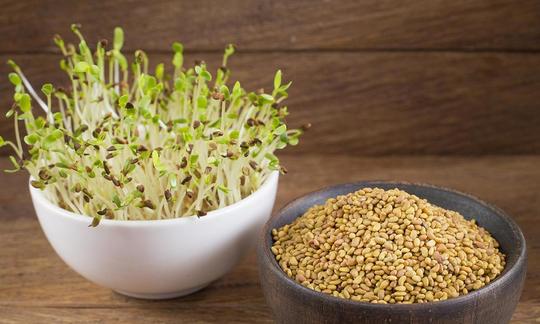

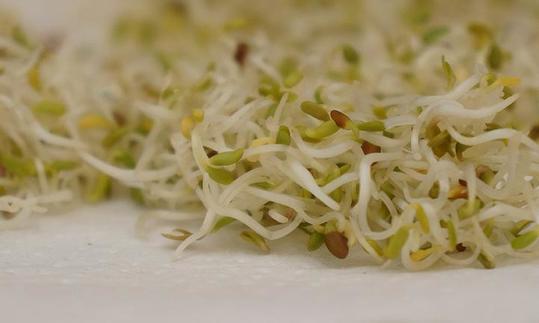

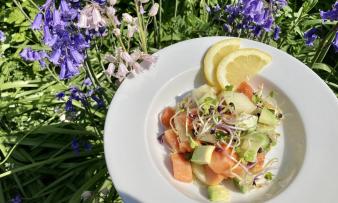
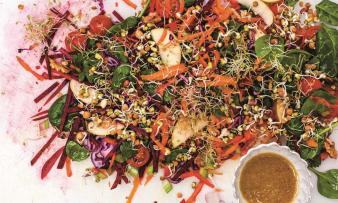
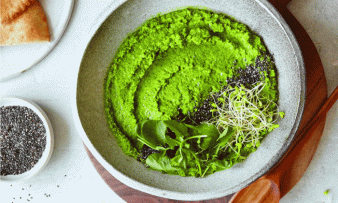

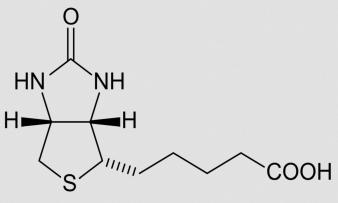



Comments